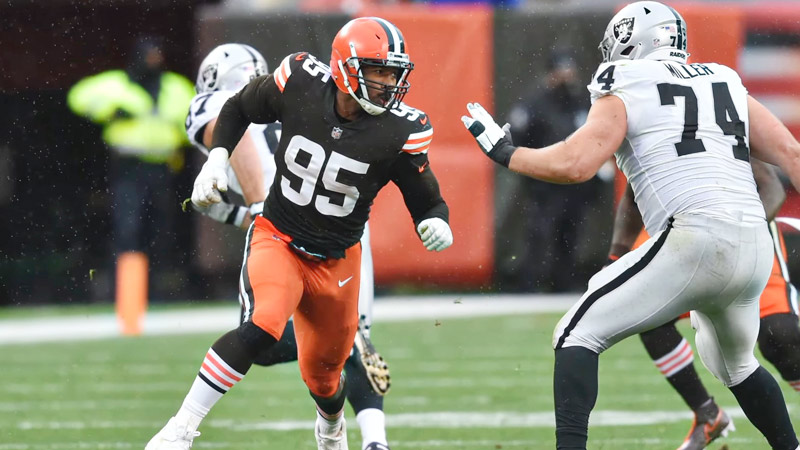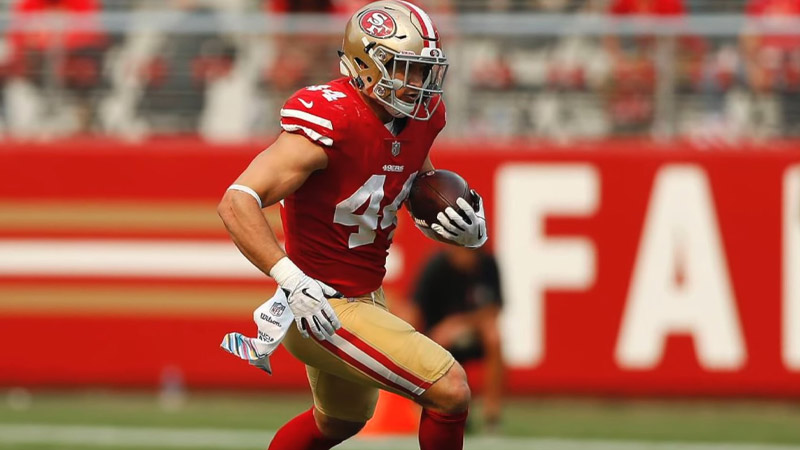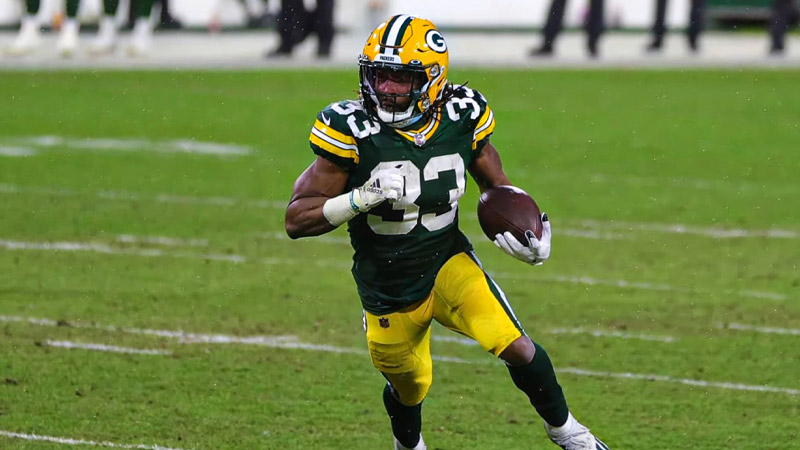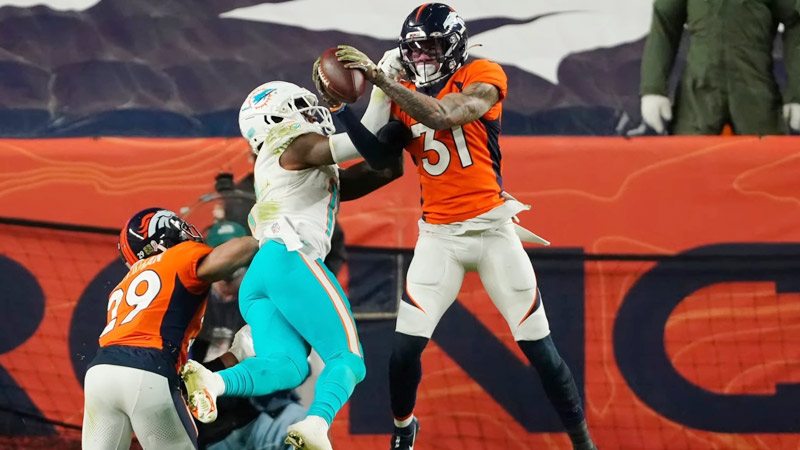In the world of American football, it’s the quarterbacks, running backs, and wide receivers who often steal the spotlight.
But behind the scenes, there are unsung heroes who hold the fort and make critical plays on the defensive side of the field, the linebackers.
The linebacker position is the linchpin of a strong defense, with players embodying versatility, intelligence, and toughness.
In this blog post, we will delve deep into the heart of the gridiron action, exploring the roles, responsibilities, and unique challenges faced by the American football linebacker position.
From thwarting power runs to shadowing agile receivers, linebackers are the defensive backbone. Their ability to read the opposing offense, shed blocks, tackle in open space, and lead the defense sets them apart.
We’ll dissect the anatomy of the linebacker, the types of linebackers, and their crucial on-field duties.
Whether you’re a football enthusiast or just curious about the game’s intricacies, this post offers a comprehensive insight into the relentless warriors of the football field. Stay focused.
The Anatomy of a Linebacker in American Football
In American football, a linebacker is a vital component of the defense, known for their agility, strength, and football intelligence. Their anatomy is finely tuned for their multifaceted role.
Linebackers typically have a robust physique with powerful legs and a strong core, enabling them to change direction and tackle opponents quickly.
They possess above-average speed and explosiveness to cover ground rapidly.
Their upper body strength allows them to shed blocks and take down ball carriers. Linebackers also require acute spatial awareness and excellent vision to read offensive plays and react swiftly.
The anatomy of a linebacker is characterized by a balance of strength, agility, and football IQ. These athletes are the backbone of a defense, using their physical prowess and mental acumen to thwart opposing offenses.
Types of Linebacker

There are several types of linebackers in American football, each with distinct roles and responsibilities based on their physical attributes and skill sets. The primary types of linebackers include:
Middle Linebacker (MLB)
- Often considered the quarterback of the defense, the middle linebacker is responsible for calling plays and making adjustments.
- They are typically strong, with good tackling skills and the ability to read the offense effectively.
Outside Linebacker (OLB)
- Two types of outside linebackers exist: strong-side (SOLB) and weak-side (WOLB).
- Strong-side linebackers are generally bigger and are tasked with setting the edge in run defense and covering tight ends.
- Weak-side linebackers are often faster and excel in pass coverage, providing support against the pass.
Inside Linebacker (ILB)
- Inside linebackers can play in the middle or on either side of the formation, and they are crucial in both run and pass defense.
- They need to be versatile, able to tackle effectively, and cover the open field.
Pass Rush Specialist (Rush Linebacker)
- Some linebackers specialize in rushing the quarterback and are called rush linebackers or edge rushers.
- They are known for their speed, agility, and ability to apply pressure on the quarterback.
Hybrid Linebacker/Safety (Moneybacker)
- This type of linebacker combines the attributes of a traditional linebacker and safety.
- They are agile and excel in pass coverage, making them valuable in defending against both the run and the pass.
Each type of linebacker brings unique skills and attributes to the defense, allowing coaches to tailor their strategies to counter the opposing team’s offense effectively.
American Football Linebacker Position

The linebacker position in American football is crucial to the defensive unit. Linebackers are typically positioned just behind the defensive linemen but in front of the defensive secondary (safeties and cornerbacks).
Their primary role is to defend against both the run and the pass, making them versatile and key players on the field. Here are some key aspects of the linebacker position:
- Run Defense: Linebackers are responsible for stopping running backs who carry the ball and disrupting running plays. They must read the offensive line’s blocking schemes, fill gaps, and make tackles.
- Pass Defense: Linebackers are often involved in pass coverage, especially when covering tight ends, running backs, or dropping into zone coverage. Some linebackers specialize in pass-rushing to pressure the quarterback.
- Tackling: Linebackers are known for their tackling ability. They must be sure tacklers and are expected to bring down ball carriers effectively.
- Blitzing: Linebackers may be called upon to blitz, which means they aggressively rush the quarterback to disrupt passing plays. This requires speed and agility.
- Recognition and Diagnosis: Linebackers must quickly recognize offensive plays, anticipate the opponent’s actions, and react accordingly. They often serve as on-field leaders, making pre-snap adjustments.
- Size and Speed: Linebackers come in various sizes, but they need a combination of strength, speed, and agility to be effective in their roles. Different linebacker positions may have varying physical requirements.
Common linebacker positions include the middle linebacker (MLB), strong-side linebacker (SOLB), and weak-side linebacker (WOLB), and some may play hybrid roles or specialize in pass-rushing.
Linebackers play a pivotal role in the defensive strategy, disrupting the opposing team’s offensive plays and help prevent the advancement of the ball down the field.
Responsibilities of the Linebacker on the Field

Linebackers in American football have diverse responsibilities on the field, and their roles can vary depending on the defensive scheme and specific play calls. Here are the primary responsibilities of linebackers:
Run Defense
- Read and React: Linebackers must read the offensive play as it unfolds and quickly react to the ball carrier’s movements.
- Gap Filling: They are responsible for filling gaps in the defensive line to stop running backs from gaining yardage.
- Tackling: Linebackers must be sure tacklers bring down ball carriers effectively to prevent big gains.
Pass Defense
- Coverage: Linebackers often cover tight ends and running backs or drop into zone coverage to defend against short to intermediate passes.
- Pass Rushing: Some linebackers, particularly rush linebackers, may be tasked with blitzing to pressure the quarterback, requiring speed and agility.
Quarterback Spy
In certain situations, linebackers may be assigned to spy on the quarterback, keeping an eye on their movements to prevent scrambles.
Recognition and Diagnosis
- Linebackers must quickly diagnose plays, anticipate the actions of the offense, and make adjustments as needed.
- They communicate with teammates, making pre-snap adjustments and ensuring everyone is in the right position.
Leadership
Linebackers often serve as on-field leaders, calling defensive plays and providing direction to the rest of the defense.
Special Teams
Some linebackers play significant roles on special teams, such as kickoff and punt coverage, where their tackling skills are valuable.
Goal Line Defense
In goal-line situations, linebackers are crucial in preventing touchdowns, making key tackles near the end zone.
Pursuit
Linebackers must intensely pursue the ball carrier, especially on plays extending to the sideline.
Zone Drops and Reading the Quarterback
Linebackers dropping into zone coverage need to read the quarterback’s eyes, anticipate passes, and break on the ball.
The specific responsibilities of linebackers can vary based on the defensive scheme, opponent, and play call.
Linebackers are versatile players who are expected to excel in both run and pass defense, making them integral to the success of a football defense.
Challenges of the Linebacker on the Field

Linebackers in American football face various challenges on the field, making their role one of the most demanding positions on the defensive side.
Here are some elaborate challenges they encounter:
Versatility
Linebackers must be versatile, as they must defend against both the run and the pass. They face the challenge of balancing their responsibilities effectively, whether it’s stopping a power run or covering a fast wide receiver.
Reading the Offense
Linebackers must quickly read the opposing offense, identify plays, recognize patterns, and make split-second decisions.
The challenge lies in not falling for play-action fakes or misdirection, which can lead to blown coverages.
Block Shedding
Linebackers need to shed blocks when engaging with offensive linemen to get to the ball carrier or quarterback.
This requires physical strength and technique. Overcoming the size and strength of offensive linemen is a significant challenge.
Coverage Skills
Linebackers often cover skilled pass catchers, such as tight ends and running backs. Maintaining coverage, especially in man-to-man situations, can be challenging while navigating through traffic.
Tackling in Space
Making tackles in an open field, particularly against elusive and fastball carriers, is a significant challenge. Linebackers need to demonstrate excellent open-field tackling skills to prevent big gains.
Play Recognition and Play-Action
The challenge is distinguishing between run and pass plays. Falling for play-action fakes can leave linebackers out of position and vulnerable to big plays.
Physical Toll
Linebackers endure a considerable amount of physical contact throughout the game. They are often involved in high-impact collisions with offensive linemen and running backs.
Over the course of a season, this can lead to physical wear and tear, injuries, and fatigue.
Linebackers must continually adapt and refine their skills to meet these challenges, as the evolving nature of the game and the diversity of offensive schemes require them to be well-rounded players.
FAQs
What are the key responsibilities of a linebacker in American football?
Linebackers are responsible for stopping the run, covering receivers, and reading offensive plays.
They fill gaps in the defensive line, tackle ball carriers, and often rush the quarterback. They also act as on-field leaders, making pre-snap adjustments and ensuring the defense is in the right position.
What types of linebackers are there in American football?
There are different types of linebackers, including middle linebackers (MLB), strong-side linebackers (SOLB), weak-side linebackers (WOLB), and pass-rush specialists (Rush linebackers).
Some may also play hybrid roles or specialize in coverage.
What physical attributes are crucial for a linebacker?
Linebackers need a balance of strength, speed, agility, and football IQ.
They should have strong legs, upper body strength, and above-average speed to excel in both run and pass defense. Recognizing offensive plays is vital.
How do linebackers contribute to a team’s success in American football?
Linebackers are the linchpin of the defense, disrupting plays and preventing the opposition from gaining yardage.
Their ability to read the offense, tackle effectively, and lead the defense is pivotal in stopping opponents and winning games.
What are the challenges faced by linebackers on the field?
Linebackers deal with the challenges of versatility, recognizing plays, block shedding, coverage skills, tackling in open space, play-action deception, and the physical toll of the game.
They must adapt continually and refine their skills to meet these demands, making them unsung heroes of American football.
Wrapping Up
American football’s linebacker position is where raw power, keen intelligence, and unwavering determination converge. As the unsung heroes of the gridiron, linebackers play an indispensable role in shaping the outcome of a game.
They’re the last line of defense, tasked with reading complex offensive schemes, shedding imposing blockers, and making crucial tackles in the open field.
Throughout this blog post, we’ve unveiled the multifaceted nature of these athletes, from their anatomy to their diversified roles on the field.
While quarterbacks and running backs dazzle with touchdowns and highlight-reel plays, linebackers labor in the trenches, disrupting the opposition’s plans. They exemplify the essence of teamwork, leadership, and resilience in American football.
So the next time you watch a game, keep an eye on the linebackers, the silent architects of a formidable defense. Their contribution is nothing short of legendary, and they remain a testament to the sport’s enduring appeal. Thank you so much.







